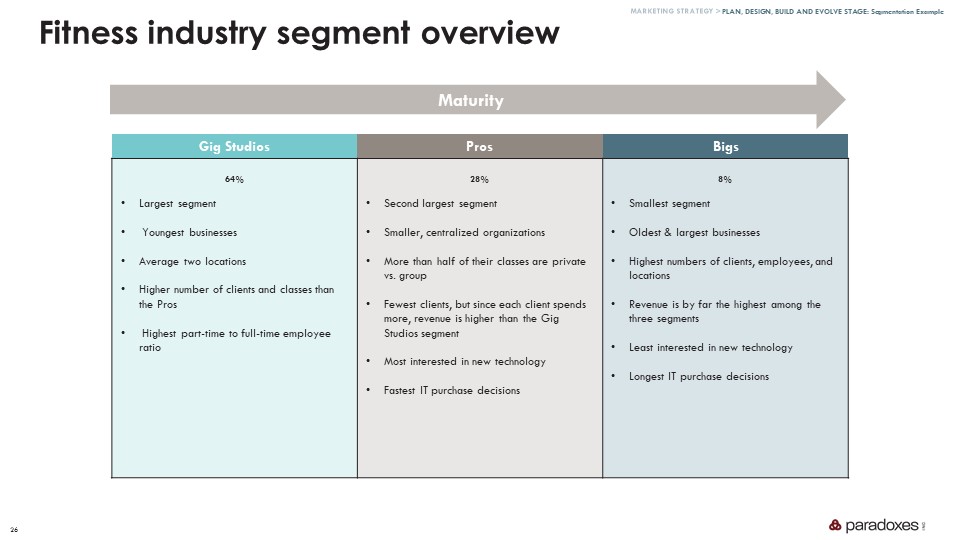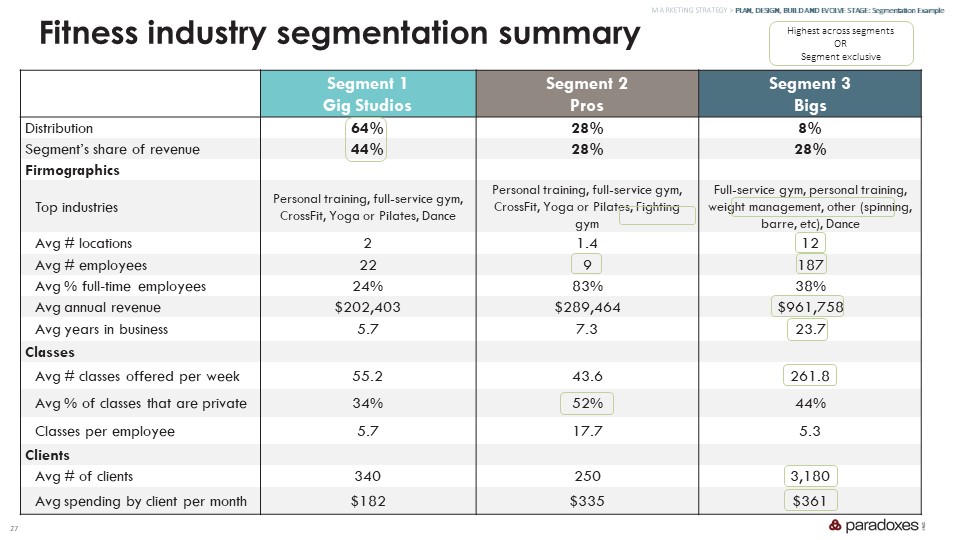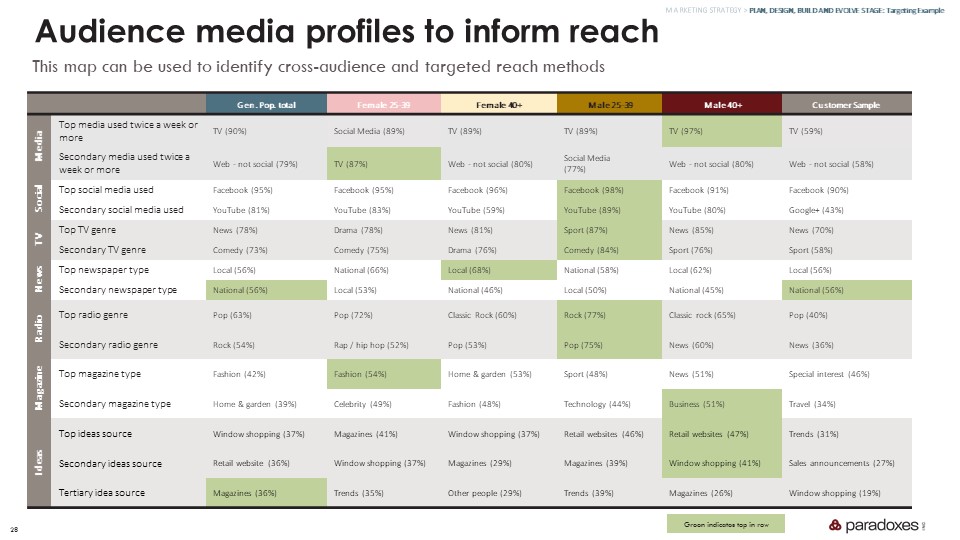Segmentation & targeting
Market segmentation is used to identify and size discrete groups that have unique needs and interests, distinct from other groups. Once identified, companies can decide which segments to prioritize for a given purpose (e.g., biggest opportunity, best product fit) and customize their offering for those unique needs.
Segments should be mutually exclusive and collectively exhaustive (MECE) and are extensible.
Key Questions Answered:
What market segments exist?
What characteristics define those segments (e.g. motivations, behaviors, needs, wants, firmographics, demographics)?
What is the size of those segments?
Which segment(s) should you prioritize?
What are the typing tool questions you can use to identify members of a segment based on profiling questions?
How can you identify companies/consumers in those segments in internal/external databases? In the wild?
The Paradoxes approach:
Segments can be developed in different ways:
A priori:
Using pre-determined, easily identifiable attributes to define segments (e.g., age, income, org size). Lowest cost, shortest time. Least differentiated. Easily identifiable.
Index-based:
Using quantitative data to create an index using a point system based on available characteristics (e.g., attributes that are associated with advanced technology usage). Moderate cost, moderate time. Can be difficult to statistically differentiate.
Multi-variate:
Using quantitative data to develop a model using techniques such as Factor Analysis, K-Means, Cluster Analysis to create mathematically driven, differentiated segments. Most expensive, most time. Most statistically differentiated. Can be difficult to identify in the wild.


